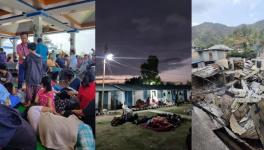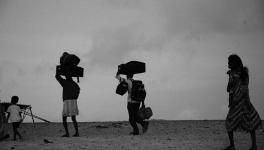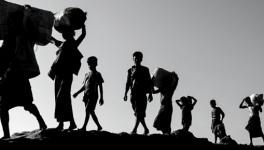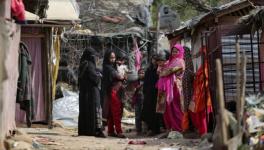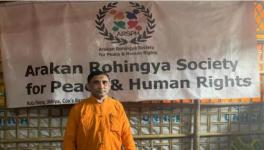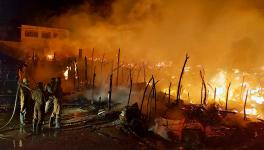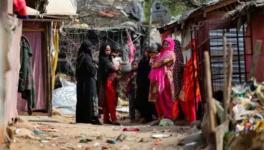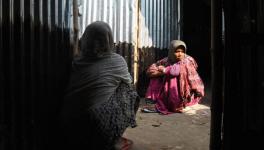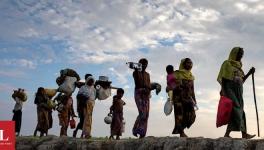Most Refugees are Victims of Conflict, Trying to Escape Western Wars
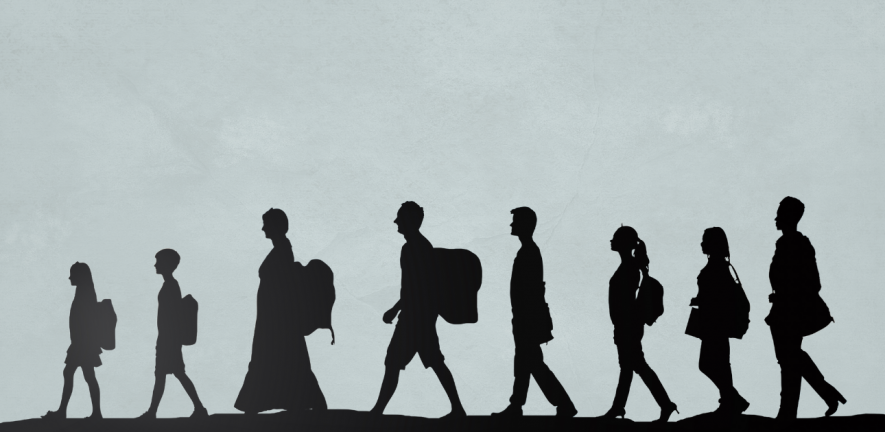
Representational Image. File Image
World Refugee Day, which falls on June 20 each year, “celebrates the strength and courage of people who have been forced to flee their home country to escape conflict or persecution”. This year, the double standards in the approach of rich Western countries towards human rights and humanitarian laws were dramatically revealed a few days before this celebration. An unseaworthy boat carrying 750 refugees capsized off the Greek coast, and investigations have shown that the ship sent distress calls for over 12 hours, which were ignored. In contrast, the search and rescue operations for Titan, a submersible vehicle lost during a recent North Atlantic descent to explore the wreckage of the Titanic, has been the focus of Western media.
Billionaires in search of singular adventures spend big to scale peaks, sail across oceans and blast off for space. Passengers paid $250,000 each to participate in the Titan’s voyage. The question is, should society spend its resources on rescuing people wealthy enough to undertake risky activities—and completely ignore refugees who risk their lives to cross the seas in unseaworthy boats? Why is the world indifferent to the distress and anguish of the refugees?
The European Union and Australia have passed laws to prevent refugees from coming into their countries to seek asylum. These laws have inflicted greater suffering on those trying to escape conflicts and wars but cannot stop the continued displacement of people in Asia, Africa, and, more recently, Europe. In June, the United Nations High Commissioner for Refugees or UNHCR said that the number of people displaced worldwide had reached a record 11 crore [110 million]. This includes people seeking safety within their countries and those who crossed borders. The report finds that refugees and asylum-seekers are about 37.5% of the total displaced. By the end of 2022, of the 10.8 crore [108.4 million] forcibly displaced people, an estimated 40%, or 4.3 crore [43.3 million], were children. An average of 3.85 lakh children were born as refugees every year between 2018 and 2022.
Behind these statistics are the stories of men, women and children living with unbearable memories of being torn apart from their homes, families or lovers. Most live in fear, stress and anxiety about their future. They are all victims of human cruelty and barbarity, conflicts and wars—behind every conflict and war is the hand of the United States and its allies.
The UNHCR chief Filippo Grandi blamed the “usual package of causes” for this displacement—conflict, persecution, discrimination, violence and climate change.” He did not name the countries responsible for this violence—the perpetrators remained unnamed. Yet the Costs of War Project has revealed that the post-9/11 wars of the United States have forcibly displaced at least 3.8 crore [38 million] people in and from Afghanistan, Iraq, Pakistan, Yemen, Somalia, the Philippines, Libya, and Syria. This exceeds those displaced by every war since 1900 except World War II.
Grandi did say that solutions to the exploding numbers of refugees triggered by conflicts and wars are “increasingly difficult to even imagine, to even put on the table.” He said, “We are in a very polarised world, where international tensions play out all the way into humanitarian issues.”
British-Somalian poet Warsan Shire has captured the horror of a conflict which forces a person to run away from home and country in her poem “Home”:
you only run for the border
when you see the whole city running as well.
your neighbours running faster than you,
the boy you went to school with
who kissed you dizzy behind the old tin factory is
holding a gun bigger than his body,
you only leave home when home won’t let you stay.
Where refugees flee is a source of a common misconception. In most cases, people affected by the world’s largest refugee crises are unable to make it to rich countries in Europe or North America. They shelter in neighbouring countries. Based on UNHCR data, the five countries with the largest numbers of refugees in 2023 are:
-
Iran is host to 8,40,000 refugees, 8,20,000 of whom came from Afghanistan.
-
Ethiopia hosts over 8,67,000 refugees. Most escaped conflict in nearby South Sudan, Somalia, Sudan, and Eritrea. It is also at the centre of the Horn of Africa crisis, a multi-year drought impacting refugees and host communities.
-
Virtually all 9,29,000 refugees in Bangladesh are stateless Rohingyas from Myanmar’s Rakhine state. The Cox’s Bazaar city has become home to the world’s largest refugee camp.
-
Sudan is one of the largest countries of asylum for refugees (11 lakh or 1.11 million in 2022). And it is the country of origin for one of the world’s largest refugee crises. The Darfur area hosts an overwhelming majority of forcibly displaced people.
Those who get asylum in the West are made to feel gratitude, and their contribution to the host economy and culture is largely unacknowledged.
In contrast to the indifference to refugees escaping conflict zones in Asia and Africa, European Union countries bordering Ukraine have allowed entry to all Ukrainian refugees. The European Union has invoked the Temporary Protection Directive, which grants Ukrainians the right to stay, work, and study in any European Union member state for an initial one-year period.
But then, from the start, the refugee protection regime was put in place for Europeans. Academics often argue that the United Nations Refugee Convention, 1951, is essentially euro-centric. Of the 26 states that drafted this convention that year, 17 were from Europe, and another four were of West European or North American disposition. This convention was rooted in the Cold War and meant to give visibility to defectors from the Soviet Union. It is why many Third World countries, including India, did not become parties to the Refugee Convention.
The largest number of refugees have been produced by the nature of international borders created by colonial powers, such as the partitions of British India and Palestine. Even the Cold War was by no means limited to Europe. The United States intervened in Asia in the Korean War (1950-1953) and the Vietnam War in the 1960s and 1970s. It was all these conflicts and wars that produced refugees.
Many refugees from Asia and Africa choose to come to India because they feel it would welcome and embrace them with compassion. While many indeed were welcomed and managed to find some security, the official policy in India has ensured they live in constant fear of arbitrary arrest and detention. They are also targets of racism and Islamophobia. But the most shocking discovery for refugees who seek UNHCR protection in India is the utter indifference of its officers and NGOs working with the United Nations body.
The theme of World Refugee Day 2023 is “Hope Away From Home.” It supposedly focuses on the “power of inclusion and solutions for refugees”. Partly inspired by this theme, for the first time, Indian civil rights organisations called Indians to demonstrate their support for refugees by gathering at the UNHCR in Delhi. They assumed it was the right place to show their solidarity.
That is why they were shocked when the UNHCR barricaded its offices in Delhi with metal barriers, brought in a private security force, and the police in full strength. There were still more barricades on either side of the road leading to the UNHCR office, guarded by police—again in full force—and intelligence officers and a police van on standby, all ready to whisk refugees and their supporters to some detention centre.
Not only was the UNHCR office closed, its windows were shut, too, and it seemed more like a fortress than a harbour for refugees.
The police moved in when three bus-loads of refugees from Myanmar arrived. The refugees were primarily women and children, most of them recognised by the UNHCR as refugees or asylum-seekers. They stood at the barrier, praying and asking to hand over a memorandum to the UNHCR and for someone from the office to offer them a few words of comfort.
These are Chin refugees from Myanmar who fled their homes after military coups that brought a brutal military regime to power. The regime has refused to hand over power to the democratically-elected National League for Democracy (NLD). In a series of trials, the NLD leader Daw Aung San Suu Kyi was given a 33-year sentence. World Refugee Day was one day after Suu Kyi’s 78th birthday—her third birthday in prison.
According to exiled Burmese media group Mizzima, on 19 June, thousands of Suu Kyi supporters marked her birthday with a “Flower Strike”. Thousands put out or wore flowers as a gesture of support and defiance against junta rule. Unfortunately, the defiance—mostly of women—led to numerous arrests in Yangon and Mandalay. Mizzima, which has continued to broadcast news from Myanmar, reported that even social media users got into trouble after posting “flower-related” photos and memes. Some were reportedly arrested and charged. Others were held and forced to sign a declaration not to participate in subversive political activity.
The people of Myanmar have been subject to air strikes, arrests, tortures and lengthy prison sentences for non-violent protests. According to a United States Institute of Peace report, since Myanmar’s last military coup in February 2021, over 50,000 civilians have fled its Chin State and Sagaing Region for India’s Northeast.
The Chin refugees have been dragged into the deadly ethnic clashes between the Meiteis and the Kukis in India’s Manipur state. These clashes have displaced 50,000 Indian citizens, now living in at least 300 relief camps. The Meitei and Kuki-Mizo groups fear the refugees may permanently settle on their lands—a fear exaggerated and fanned by the Bharatiya Janata Party government ruling Manipur. Evoking fear of the “outsider” has made the refugees from Myanmar very vulnerable.
The Ministry of Foreign Affairs of Myanmar’s National Unity Government has released a list of dos and don’ts for refugees who shelter in India for security reasons. In a 15 June statement, it has said that Myanmar citizens and their social organisations are to avoid disturbing the host country’s sovereignty and territorial integrity, not associate with its political and administrative matters, not get involved in the illegal wildlife and drug trades, live harmoniously with the local communities and abide by social and religious disciplines. It says that in case of any problems, they must immediately contact the nearest Hluttaw representatives, social organisations and the Foreign Affairs Ministry.
Refugees from Myanmar who have managed to reach New Delhi with the hope of getting UNHCR protection find it merely gives them an “asylum card” and not a refugee card, which would entitle them to many more schemes the agency can offer.
These refugees face innumerable problems, from a lack of medical assistance from the UNHCR to the lack of access to education for their children and the inability to find work. They find it difficult to get any hearing from UNHCR officers, who seem to have abdicated all responsibility to local NGOs who, in turn, are unresponsive to the refugees’ appeals.
UNHCR Delhi did not just make concerted efforts to discourage the refugees from gathering outside their office. Its chief of mission, who rarely reaches out to refugees, even went to the Vikas Puri Community Centre in West Delhi to persuade refugees not to demonstrate on World Refugee Day. The ostensible reason for this advice was that the residents of Vasant Vihar have filed a case against the UNHCR, whose office is in the same residential area. The frequent gatherings of refugees, slogan-shouting, the refugees’ desperate calls for their rights, and some sleeping on the road outside the office, have disturbed the residents.
The question is, why was the UNHCR office situated in a residential area in the first place?
Another UNHCR claim is that the refugees need not gather outside its office since multiple communication channels exist. This argument is specious because these “multiple channels” are with NGOs and not directly with the UNHCR officers. Most refugees do not know English, and writing emails or phone calls can hardly substitute their meeting a human being who can offer a modicum of comfort in an atmosphere increasingly hostile towards refugees.
It is indeed more than ironic that the UNHCR is spreading fear among refugees and discouraging them from demonstrating peacefully, their only effective way to make themselves visible to the Indian people and media.
The government of India has said it will no longer recognise the refugee status conferred by the UNHCR. It accuses the UN body of interfering in India’s internal affairs. The central government has said it will treat every refugee as an “illegal migrant” liable to be deported. It has stopped giving the majority of refugees residential permits, so they cannot open bank accounts or send their children to school or work. It has even refused exit permits to refugees who have got resettlement in a third country.
Even in Delhi, refugees from Myanmar and other countries are living below the poverty line—thus, they are denied their right to life, guaranteed under the Constitution of India to every person residing within Indian borders. They get little or no financial help from the UNHCR. And since India does not have a refugee protection regime, while the one that existed informally has been torn apart, all institutions are being corrupted. The government has gone against court judgements, which has created a crisis in the judiciary on the refugee protection question.
The Manipur crisis has shown India urgently needs a refugee protection regime. Indeed, the National Human Rights Commission has been asked to create the blueprint of such a regime. However, it is essential for civil society to engage with the issue. A good refugee protection regime will help maintain the safety and security of Indian citizens. That is the lesson we should learn from the ongoing crisis in Manipur.
The author is a human rights lawyer, teacher, campaigner, and writer. The views expressed are personal.
Get the latest reports & analysis with people's perspective on Protests, movements & deep analytical videos, discussions of the current affairs in your Telegram app. Subscribe to NewsClick's Telegram channel & get Real-Time updates on stories, as they get published on our website.









